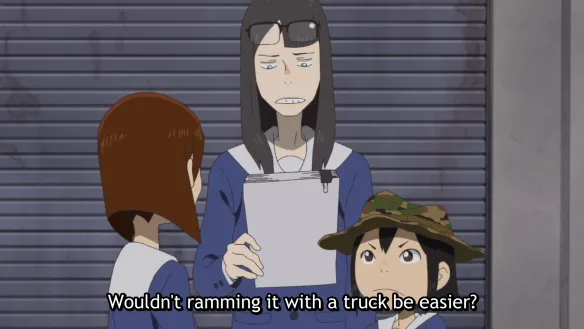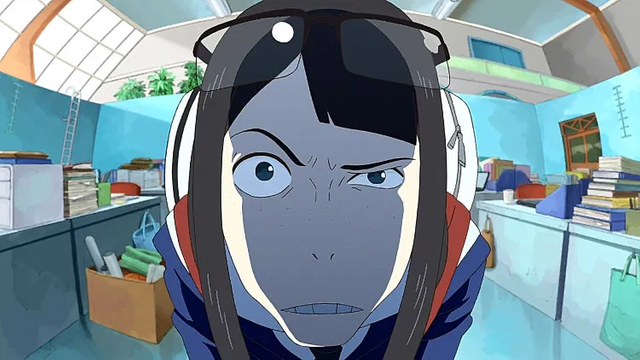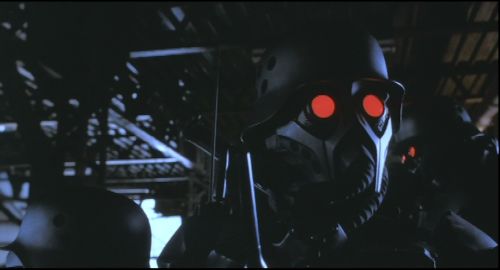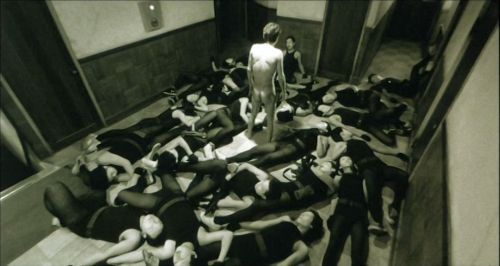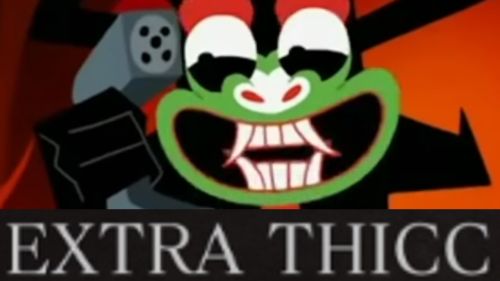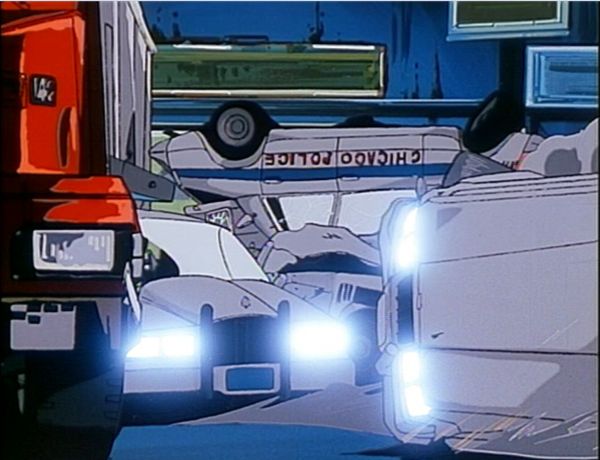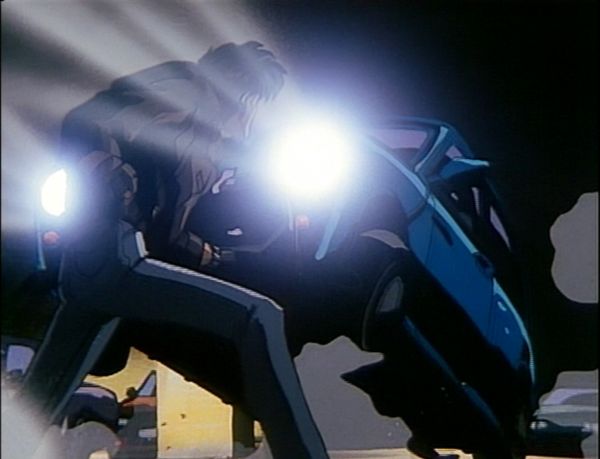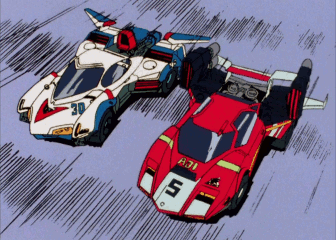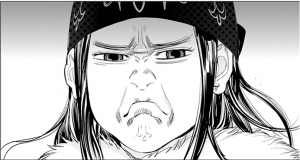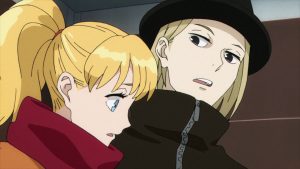When the world needed a savior, Kanta Mizuno appeared – and it was pretty much downhill from there.
by Gristle McThornbody

Desert Punk is a 24 episode romp from our old friends at Gonzo that spins the tale of *the bestest ever* Handyman Guild mercenary and his misadventures in the Great Kanto Desert. Surrounded by much more competent (or at least level-headed) contemporaries -and an apprentice- scrounging for table scraps in post-apocalyptic Japan, what once was a flight of fancy almost seems an attainable and realistic “new normal” when viewed from the 2020 landscape. Some shows are plot driven, some are “plot” “driven” (boobs), and some, like this one, are character driven (also boobs). While sitting as another post-world-ending anime, and borrowing quite a few well-known tropes of both that genre and good Japanese humor, the thing that sets DP apart is the bang-up jobs the Americans did with the localization.
The dub is what essentially made anime more appealing to me back in 2009, having come from a good diet of Cowboy Bebop on CN, and seeing Azumanga Daioh at the Clark County anime club. It was proof that anime could do more than be cool like Bebop or ordinary like Azu. Madcap adventures and well-done ribald humor planted firmly into satire with a decent plot (up to a point) endeared Desert Punk to me, and made me want to jump into the genre even more.
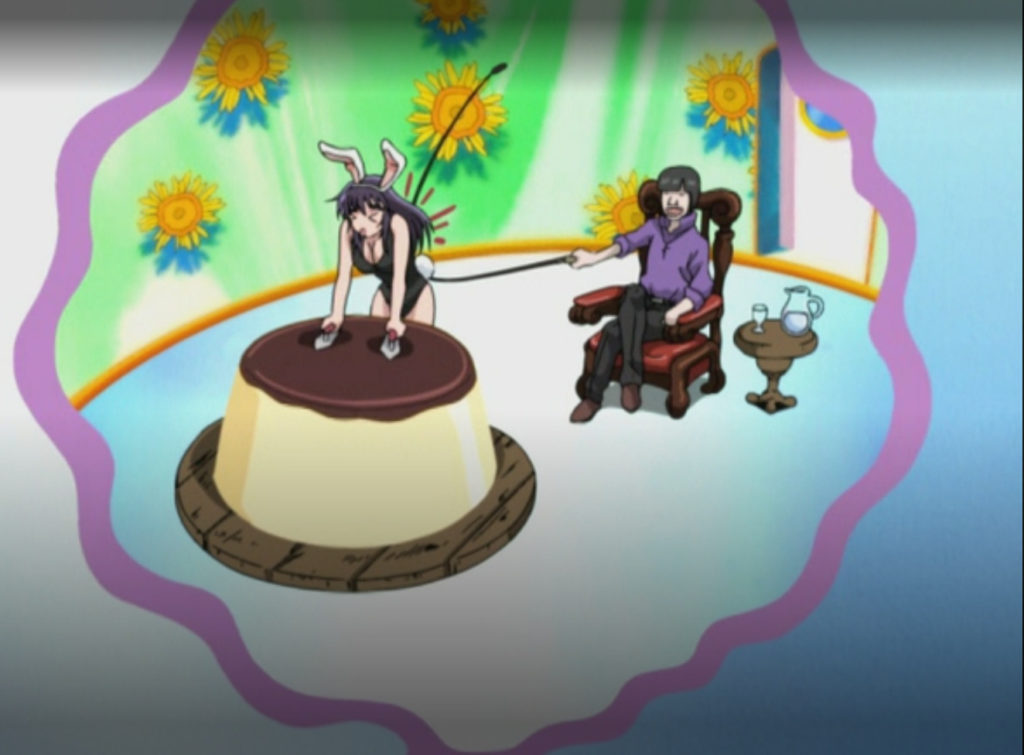
Adapted from the still-ongoing manga by Usune Masatoshi, the anime plows through its 24 episodes fully tongue-in-cheek, and it’s obvious they had tons of fun adapting the madcap adventures to an English language audience. If you want a sampler without spoiling the Gonzo ending, take these Punkisms for a ride. I’d venture a guess that either the ADR folks were given full-reign, and very much knew their source material very well, because whoo-boy, have I seen tons of anime set in this type of world where the VO falls flat on its face. So, I’m grateful that they had a deft, 4th-wall-breaking dub to take us through to the end times of this anime.

While it’s been 11 years since I first saw it, removing the rose-colored glasses of nostalgia reveals that this is a still-fun watch. There are plenty of wacky, wild situations for the titular character goes head first into, and it gets into an episodic, nearly predictable formula. Namely, DP does a thing, either fails or succeeds and almost gets the boobies. Situations range from stealing what turned out to be a truck full of poop, to trapping the boob-tastic Junko so that she ends up high heels and a bathing suit, to a nice dueling episode with Rain Spider. Along the way, DP picks up an assistant/apprentice/annoying moéblob (that’s actually useful one or twice), and with the strong bunch of folks, it rather works out well, surprisingly. So, that’s the first 75%. The plot gets flipped at the end, but this is a Gonzo title, after all. Plan accordingly. But I’m not giving away that end, though lol! So, since you’re the type of audience that likes Max Weeb, you’ll probably like Desert Punk, too.

Fuck Yeah! Look It Up:
Desert Punk (2004) 24 episode anime
Based on the manga by Masatoshi Usune
Produced by Gonzo, Licenced by Funimation

